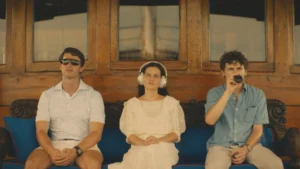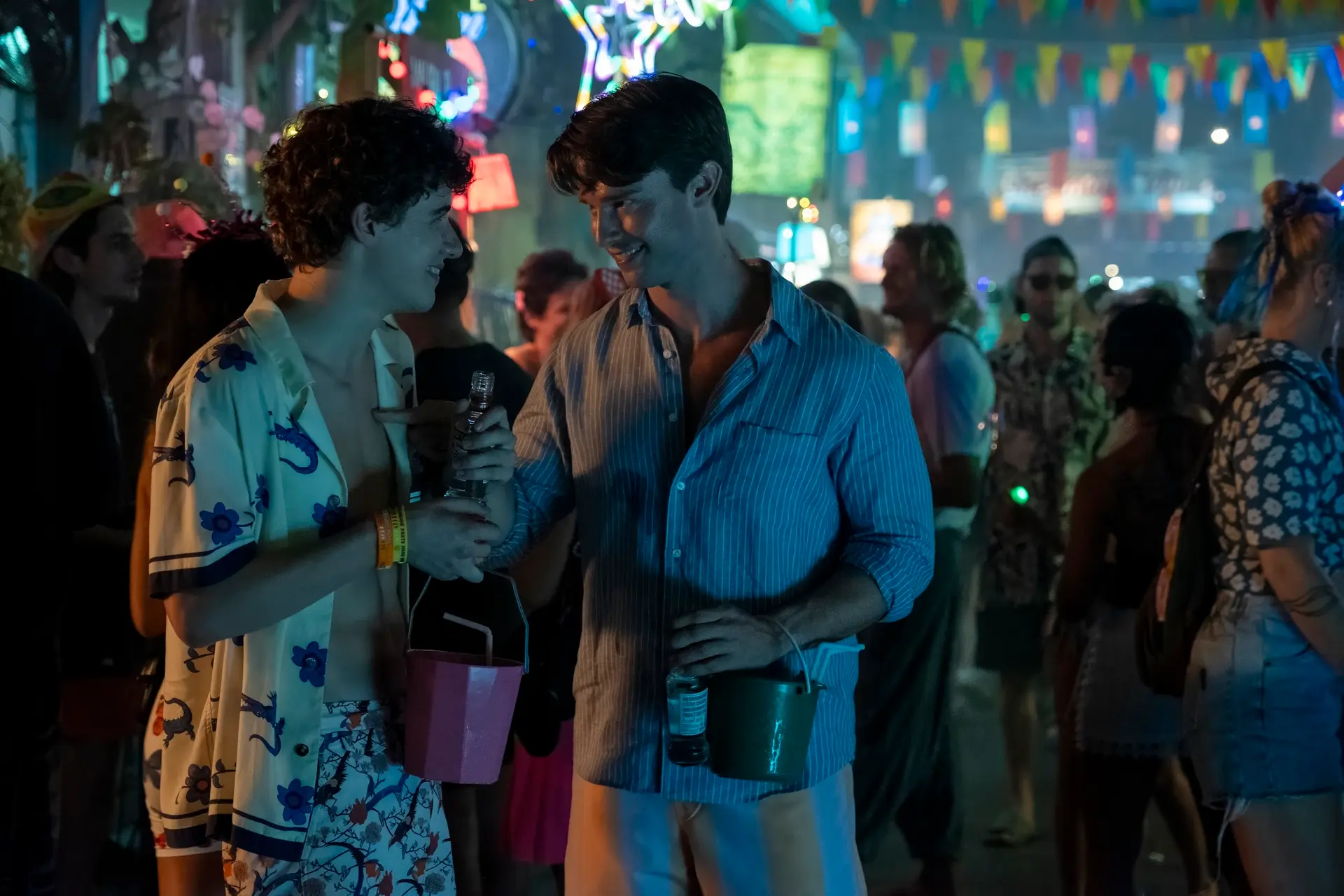In its latest episode, “The Morning After,” Season 3 of The White Lotus boldly pushes the envelope on taboo subjects, sparking conversations that extend far beyond the screen. The episode, which has quickly become a hot topic among fans and critics alike, not only delivers the series’ trademark blend of dark humor and social commentary but also introduces a storyline so daring it has some experts and viewers discussing the limits of acceptable on-screen relationships.
A Recap of “The Morning After”
The episode opens in the early hours of a seemingly ordinary morning at the luxurious resort, where the consequences of the previous night’s debauchery are just beginning to be felt. Amid lingering alcohol fumes and scattered remnants of a wild party, the guests awaken to the aftermath of actions that are as shocking as they are thought-provoking.
Central to the episode’s narrative is the controversial relationship dynamic that has developed between two members of a family, a storyline that has ignited fierce debate among the audience. Without revealing every twist and turn for those who haven’t yet watched, the plot unfolds as hidden family tensions bubble to the surface.
The narrative takes an unexpected turn when one character’s revelations about a deep-seated, long-ignored familial bond force both the characters and the audience to confront the taboo subject of incest—a storyline that The White Lotus appears determined to explore in all its uncomfortable, raw complexity.

Pushing Boundaries: Taboo Explored on Screen
For years, The White Lotus has been known for its sharp social observations and its willingness to dissect the intricacies of privilege, power, and personal demons among the elite. However, with this episode, the series takes an audacious step further. It dares to delve into an area many would consider off-limits, questioning how far the boundaries of familial love can—or should—be stretched in the name of dramatic storytelling.
Critics have been divided from the start. Some hail the show for its fearlessness in tackling controversial topics that are rarely addressed with such candor in mainstream television. They argue that the series’ decision to incorporate such an extreme element is not just for shock value, but rather a deliberate attempt to force viewers to grapple with uncomfortable truths about human desire, the complexities of family dynamics, and the societal taboos that shape our moral compass.
Conversely, there are those who feel that the storyline not only goes too far but risks trivializing sensitive issues. The inclusion of an incestuous subplot has led some to question whether the creators are using it as a sensationalistic plot device rather than a meaningful exploration of the human condition. In a media landscape where controversial subjects can quickly become a double-edged sword, The White Lotus finds itself at the center of a debate that encompasses both artistic freedom and social responsibility.

Expert Opinions: When Incest Goes Mainstream
The bold narrative choices have not gone unnoticed by cultural critics and social commentators. In exclusive interviews, several experts weighed in on the decision to include an incest storyline in The White Lotus. Dr. Elena Morales, a sociologist who specializes in media and cultural studies, shared her perspective on the matter.
“Television has long been a mirror reflecting the more complicated, and often darker, facets of society,” Dr. Morales explains. “When a series like The White Lotus chooses to explore themes that involve forbidden love or blurred lines in familial relationships, it’s not necessarily endorsing those behaviors—it’s examining them under a critical, often uncomfortable, lens. The challenge, of course, lies in balancing shock value with sensitivity and insight.”
Dr. Morales further noted that while audiences might initially recoil from the explicit presentation of such taboo subjects, there is value in art that confronts us with the parts of our collective psyche that we prefer to ignore. “It forces us to ask ourselves difficult questions about what we consider acceptable, and why,” she added.
Another expert, film critic and cultural commentator Jason Whitaker, pointed out that The White Lotus has always thrived on its ability to provoke and polarize. “This isn’t the first time the series has touched on subjects that ruffle feathers,” Whitaker remarks. “But with this episode, the impact is more profound because it challenges long-held societal norms directly. Whether viewers ultimately appreciate the risk or feel it crosses the line will depend on their own perspectives and cultural conditioning.”

Patrick Schwarzenegger Weighs In: ‘Whoa’ on Brotherly Love
Adding to the layers of controversy is the candid input from one of the series’ stars, Patrick Schwarzenegger. Known for his charismatic presence and off-screen musings, Schwarzenegger has been quick to comment on the latest developments in the show. In a recent interview, he described the unfolding “brotherly love” storyline with his characteristic blend of humor and candor.
“Whoa,” he exclaimed when discussing the scene that has ignited so much debate. “It’s not every day you see something like this on TV. The way the story unravels, it really makes you stop and think about how complex relationships can get, especially within a family. I think the writers are pushing boundaries, and while it might shock some people, it’s definitely made us all think.”
Schwarzenegger’s reaction encapsulates the tension that the episode has created among both cast members and audiences. His comments suggest that the provocative nature of the storyline was, to some extent, an intentional creative choice—one designed to spark dialogue and compel viewers to re-examine their own preconceptions about love and family.
The Cultural Impact: Reactions Across Social Media and Beyond
Social media platforms have been ablaze with discussions about the episode since it first aired. Hashtags like #WhiteLotusIncest, #TheMorningAfterRecap, and #TabooTensions have trended as fans and critics alike dissect every nuance of the controversial plotline. Twitter threads are filled with passionate opinions, ranging from fierce condemnations to surprisingly thoughtful analyses of what the storyline might represent in a broader cultural context.
One user tweeted, “The White Lotus just went where no show has gone before—exploring the grey areas of familial bonds. Love it or hate it, it’s making me question everything!” Meanwhile, others expressed discomfort, stating that such topics should remain off-limits in mainstream media. These polarized reactions underscore the powerful impact that bold storytelling can have in today’s media environment.
Entertainment blogs and review sites have also joined the conversation. Long-form articles dissecting the narrative choices, directorial decisions, and the performances of the cast have proliferated. Many of these pieces delve into the psychological and societal implications of portraying incest in a dramatic, yet critical, light. They argue that while the subject matter is undoubtedly sensitive, the way The White Lotus handles it might pave the way for more nuanced discussions about what constitutes healthy or unhealthy family dynamics in modern society.
Analyzing the Narrative: Is It Art or Exploitation?
At the heart of the controversy is a fundamental question: Is the inclusion of an incest storyline in The White Lotus a brave artistic choice or a gratuitous, exploitative ploy designed purely for shock value? The answer, it seems, is not clear-cut.
Proponents of the episode argue that the narrative is an authentic exploration of human complexity. In a world where the lines between right and wrong are often blurred, the show attempts to reflect that ambiguity. By presenting a storyline that challenges viewers’ moral assumptions, the creators are inviting an honest conversation about the nature of love, power, and taboo. They contend that art should challenge societal norms and provoke thought, even if it means stepping into uncomfortable territory.
On the other hand, critics warn that the portrayal of incest—even in a dramatic context—risks normalizing or trivializing behaviors that are deeply problematic in real life. They question whether the shock value of such a storyline outweighs its potential to harm public perceptions of acceptable behavior within families. For these critics, the narrative crosses a line into sensationalism, exploiting a subject that should remain firmly in the realm of personal trauma rather than public spectacle.

The Future of Controversial Storytelling on Television
As The White Lotus continues to spark debate, it also raises important questions about the future of television storytelling. In an era where audiences are increasingly drawn to content that challenges conventional narratives, there is a growing appetite for shows that dare to explore the darker, more complicated aspects of human relationships.
The decision by the creators to include such a contentious storyline may serve as a bellwether for the industry. It reflects a broader trend where filmmakers and showrunners are willing to tackle subjects that were once considered taboo, pushing the boundaries of what is acceptable in mainstream entertainment. However, this comes with a significant responsibility. Creators must navigate these topics with care, ensuring that their work not only entertains but also provokes thoughtful discussion without resorting to exploitation.
Balancing Innovation with Sensitivity
For Disney and other studios, the challenge will be to strike a balance between innovative storytelling and the ethical considerations that come with addressing sensitive subjects. As audiences become more discerning, the demand for narratives that are both bold and responsible is higher than ever.
In interviews following the episode, several members of the production team emphasized that their goal was to challenge viewers, not to endorse or trivialize controversial behaviors. They stressed that the aim was to depict the complexities of human emotions and relationships realistically—even when those relationships involve elements that society deems unacceptable. By doing so, they hope to open up a space for dialogue, where the audience can engage with the material critically and thoughtfully.
Conclusion: A Bold New Frontier for Television
The White Lotus Season 3, Episode 6 stands as a testament to the evolving landscape of television. By daring to explore themes of forbidden love and the grey areas of family dynamics, the show is not only entertaining but also igniting discussions that ripple far beyond the confines of the screen. The blend of controversy, expert commentary, and raw on-screen emotion has created a narrative that is both captivating and deeply unsettling.
Patrick Schwarzenegger’s offhand yet impactful “Whoa” encapsulates the mixed feelings that viewers are experiencing—a blend of shock, intrigue, and the realization that the boundaries of what we consider acceptable are shifting. Whether the incest storyline is ultimately viewed as a masterful exploration of human complexity or a misstep in narrative judgment remains to be seen. What is clear, however, is that The White Lotus has succeeded in its mission: to make audiences think, react, and engage in discussions about the most fundamental aspects of love, family, and taboo.
As the series moves forward, the long-term impact of this controversial episode will likely influence future productions. It sets a precedent for how television can handle sensitive topics with a mix of artistry and accountability. In a media world where every episode is dissected and every line of dialogue is scrutinized, The White Lotus has shown that bold choices can spark important conversations—even if those conversations are as uncomfortable as they are necessary.
Stay tuned as we continue to cover every twist and turn of this groundbreaking season, and join the conversation about where the lines between art and controversy truly lie.




